Part 1: Welcome to PNG
Port Moresby, the capital of Papua New Guinea is only 4 hours by plane from Sydney Australia, but may as well be a different world. PNG is a complicated place: rich in natural resources, cultural history and dramatic natural scenery, but hampered by issues typical of a developing nation, such as poverty, inequality and what smarttraveller.gov.au calls 'high levels of serious crime.' The more you read about PNG, the less likely you are to travel. Al Jazeera and the BBC agree that Port Moresby is 'one of the most dangerous cities in the world.' Hobbled by poor infrastructure, it is one of the few capital cities in the world which isn't accessible by road. In fact it can be extraordinarily difficult to travel inside the country, which is partly why despite the minimum wage being $8 a day, and 40% of the population living below the poverty line, a litre of diesel will cost you $1.45, and a can of coke $1.30 AUD. There's a Hilton hotel in Port Moresby, and it will set you back more than staying at a Hilton in Sydney. However I'm not an anthropologist, I'm a coffee roaster and I intend to stay on topic. I recently spent a week in the Eastern Highlands of PNG where the majority of coffee is produced, and I'm delighted to tell you about it.
PNG ranks a respectable 17th on the list of coffee producing nations by volume, lower than Kenya but higher than Tanzania. They produce more than Panama, Bolivia and Venezuela combined. The bulk of this coffee is produced in the Eastern Highlands which is a one-hour flight north west from the capital. PNG grows beautiful coffee, which is not surprising considering that conditions in the highlands are ideal. A temperate tropical climate with rich volcanic soil, and enough altitude for the coffee to develop deep flavours mean that when treated with care, the result is a world class coffee - bold, vibrant and complex.
The highlands are a proper wilderness. So wild in fact, that although the estimated national population is 9.4 million, the Financial Times reported that a yet-to-be-published study estimates the real population is likely to be almost double that, at 17 million. A staggering discrepancy. Conducting a census isn't a viable option in a place like this, where innumerable hills are draped in impenetrable jungle. Only 400,000 people live in the capital. National unemployment sits at 40%, and that number increases to 70% in the highlands, with the majority of people living a life of subsistence farming, disconnected from the cash economy. I quote numbers, but these are really just guesses considering the real population is unknown.
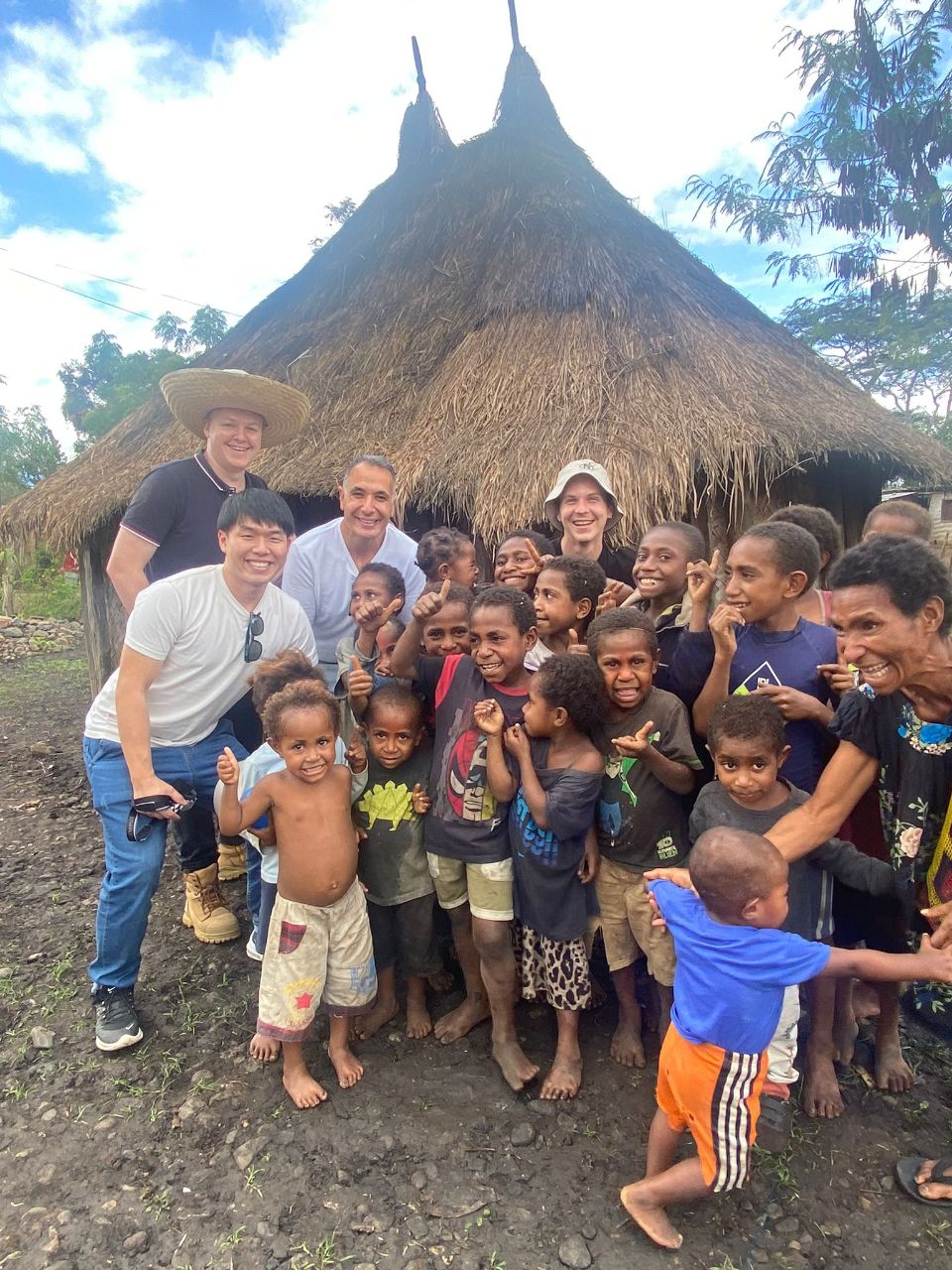
Before I visited the highlands, I imagined coffee trees growing neatly in rows like a vineyard, and while that is sometimes the case, coffee in PNG grows anywhere it pleases. In gardens, by roads, in the hills, in the fields... This is the charm of the highlands. Varietals like Typica, Arusha and Geisha, introduced in the 1920s in coffee plantations have escaped captivity. 100 years later it's difficult to tell this from that, but at the end of the day what matters most is flavour.
As is the case in the rest of the coffee growing world, the majority of coffee in PNG is grown on farms less than 5 hectares. This is what is referred to as smallholder coffee. With the price of coffee having risen steadily over the last few years, growing a coffee tree or two amongst the rest of one's crops is an increasingly attractive prospect. Subsistence farmers can grow coffee as a side hustle, and it's not uncommon for a village to pool resources and deliver a cart of coffee cherries to a mill where they can be sold.
Growing the coffee is relatively simple, but processing the coffee is a whole different story. Once a coffee cherry is picked, the clock is ticking as the coffee needs to be brought to a wet mill by the afternoon. As most of the coffee is grown in the highlands, and most of the mills are in the valleys, it can be difficult to transport the coffee in time, especially with the state of the roads. What this means is that while the gold standard is to have the coffee pulped at a wet mill, farmers may opt to process the coffee themselves and then sell it as parchment, an intermediate state between cherry and green bean.
Part 2: Processing
Coffee beans are seeds from a coffee cherry. Usually there are two seeds in the cherry, and when the bean is first picked you could bite into it and crunch the seeds as you would a red grape - there's not much resistance. If you attempted to bite into the finished product, a green coffee bean, you might do yourself an injury. They're rock hard, not unlike uncooked rice and in between these two states is the weeks-long process of drying the bean.
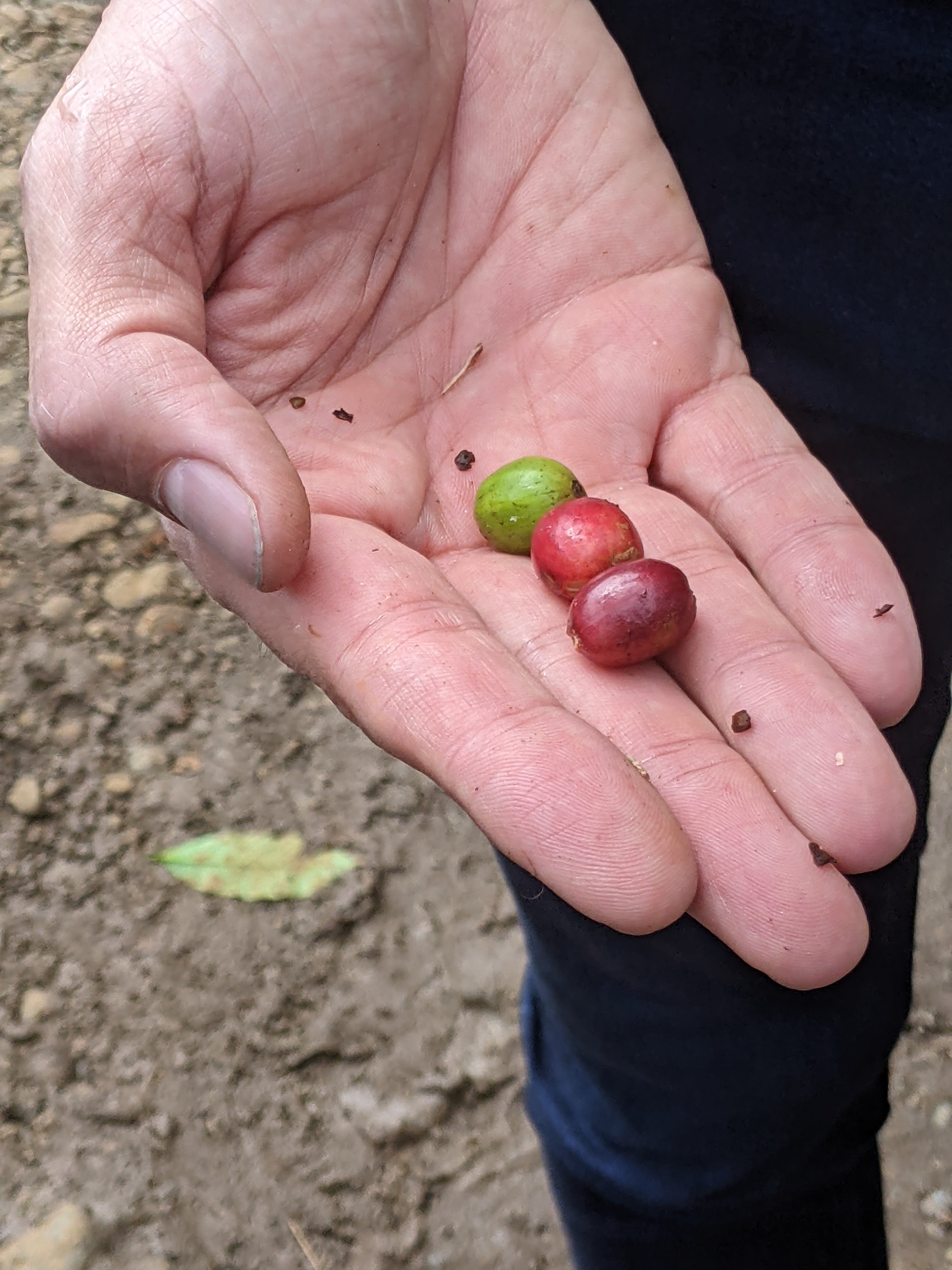
In some parts of the world it's common to just take freshly picked red cherries, dry them out in the sun and call it a day. This is what is called the natural process and when done well is capable of producing exceptional coffee. This process works well in dry climates, but high humidity means the cherries are more likely to rot. This may be why this process isn't as popular in this region.
If you're not satisfied with the natural process, then the next step in production is to pulp the coffee, ideally at a wet mill. The point of a wet mill is to separate the coffee seeds from the coffee cherry. Ripe coffee cherries are soaked in water to soften the fruit for typically 24 hours so the seed can be easily removed. The basic idea is to give the cherry a gentle squeeze so the bean pops out and the fruit can be discarded. The machines that do this essentially just force the coffee through a narrow gap - a similar principle to a pasta machine.
After pulping, the beans still have a layer of sticky sugary goo called mucilage. If you were to stop there and dry the coffee with the mucilage intact, it would be considered a honey process coffee with the mucilage fermenting in the sun as it dries. Typically this adds fruity flavours to the finished product.
I visited Kenta Mill in Mt Hagen, which took processing a step further and moved the pulped coffee into large vats open to the sun to ferment for another day. As the beans ferment, the mucilage is broken down and when the process is complete the beans are smooth and clean. This is the washed coffee process and is popular because the result is a coffee with clean and distinct flavours.
The coffee is then sun dried ideally on raised beds so the air can circulate. Coffee in this form is called parchment, due to the papery layer that remains on the bean after the washing process and protects it from the elements. Coffee in this state is very durable, and stays there until it's dry enough for the next round of processing. This process can take weeks depending on the climate and is not necessarily linear. An afternoon shower and heavy clouds might mean the coffee needs to be covered until the following morning.
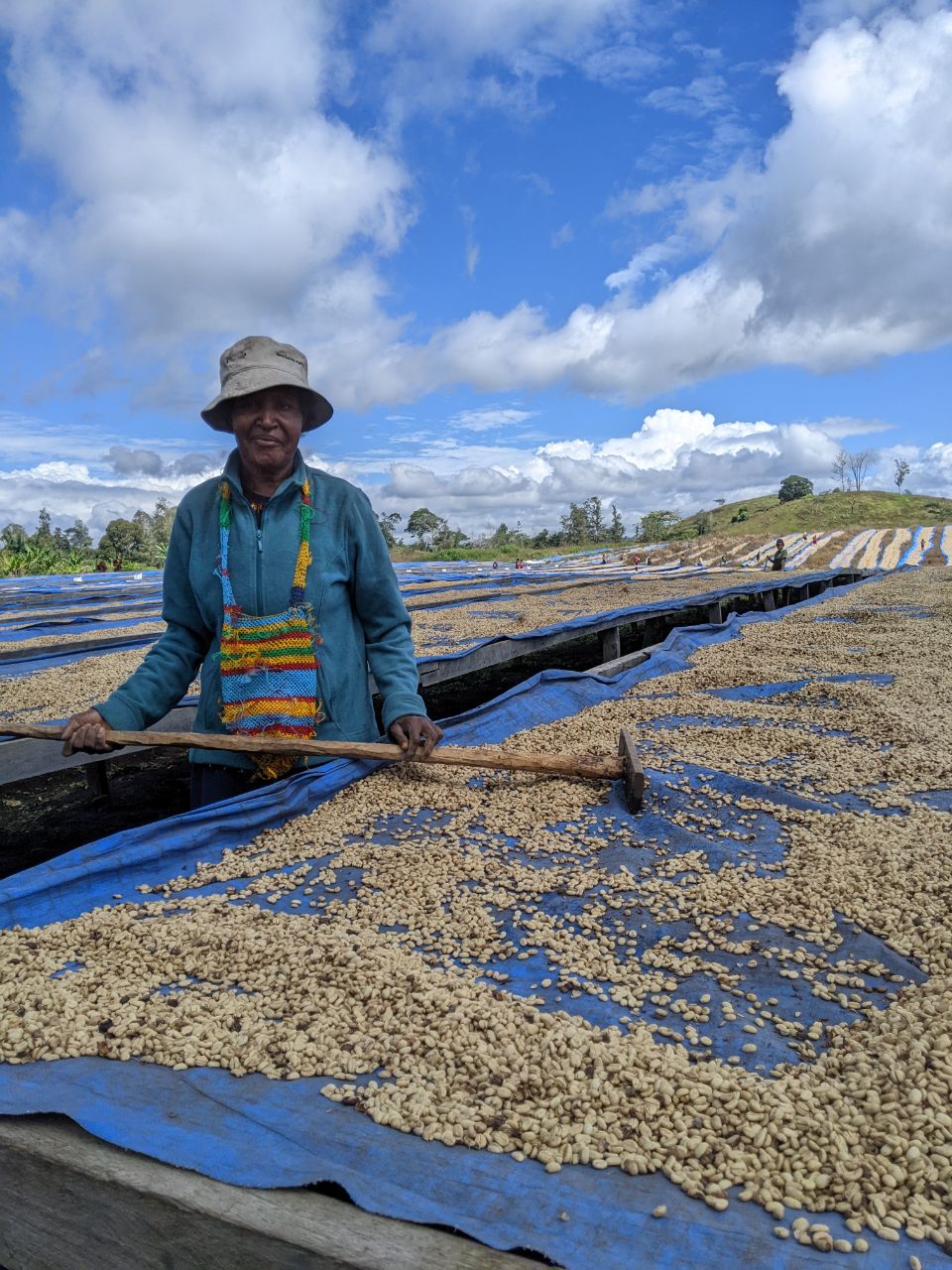
The remaining coffee cherry after the seed has been removed is considered a waste product, but it's high in phosphorus and makes a good compost. At Kenta Mill this was repurposed and used as fertiliser for community gardens maintained by the mill operators.
Part 3: Grading
When the beans are dried to around 12% moisture they're ready for a dry mill, which removes the parchment and the delicate layer underneath known as silverskin to reveal the green bean. Parchment is removed by hulling, and silverskin by polishing. These processes involve a lot more friction than pulping, so if the beans aren't adequately dried they will be damaged.
At the dry mill, the coffee is put through magnets and destoners to remove foreign objects, graded into similar sizes and sorted to remove defects. As is common in coffee across the world, coffee defects are removed by hand - a laborious process often performed by women. Grading beans to similar size and density is a key determinant of roast quality. Beans which are the same size and density will roast evenly and produce a consistent flavour. Imagine grilling two steaks cut at different widths, or baking two cakes of different volumes. Not so good.
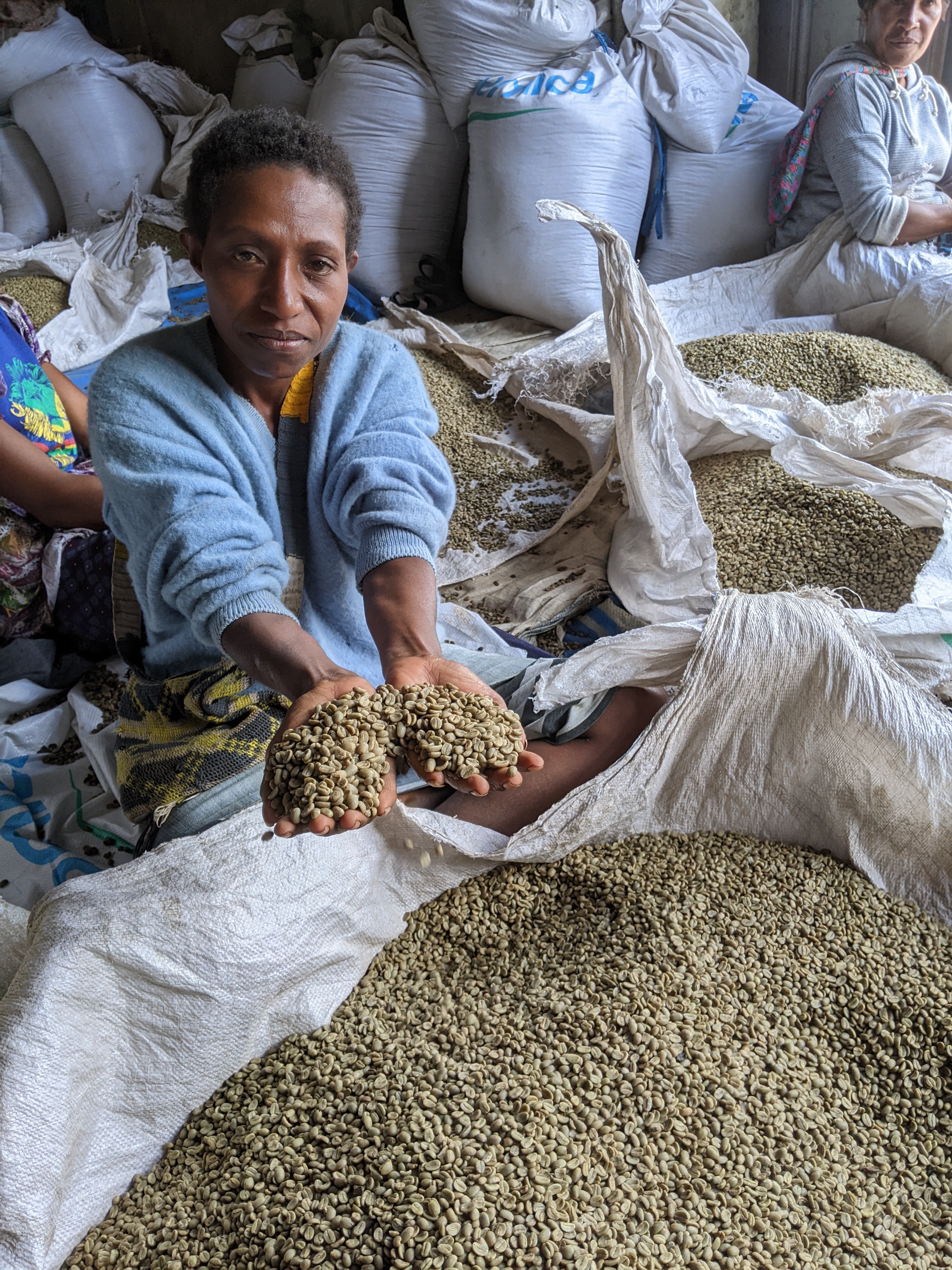
In 2020, coffee grades in PNG were overhauled, reducing the number of arabica grades from 13 to 5. These grades are A, B, Y, Y2 and Y3, with A being the highest quality and Y3 being the lowest. The higher the grade, the more care is taken in the processing. For a coffee to be considered an A grade, it must have been through a wet mill, so that the journey from coffee cherry to green bean is documented. However, this is far from the norm. Many farmers will sell parchment coffee they have processed themselves directly to a dry mill. This means that in many cases PNG coffee is untraceable, and untraceable means unpredictable.
I had the pleasure of visiting New Guinea Highlands Coffee Exports (NGHCE), a large supplier located in Goroka. I spent an afternoon there observing their processes, and I was immediately impressed by the rigorous QA program. Every bag of coffee that arrives in the warehouse is cupped to assess the grade. Green beans are assumed to be Y grade until proven otherwise. They are roasted, cupped and then moved up to a B grade, or down as far as a Y3 grade depending on the quality of flavour. After this they are blended, bagged and exported.
Assessing the coffee accurately is key to getting coffee right in PNG. For an operation like NGHCE a bad coffee blended with good coffee is self-sabotage, while a good coffee blended with bad is a wasted opportunity. What matters most is flavour, and with an operation of this size, consistency.
While I was there, I cupped a handful of coffees that were so nice it felt wrong to grade them as a B. If they had been purchased as cherries and then pulped they would have been grade A. This is part of the PNG magic. Farmers frequently turn up with half a dozen bags of exceptional parchment coffee, sell it and then disappear back to wherever they came from. Some of them are never seen again, and it's not as if you can send them an email requesting more. However NGHCE have established relationships with farmers across the highlands, in some cases purchasing equipment for them in the hope that exceptional coffee will come in year after year.
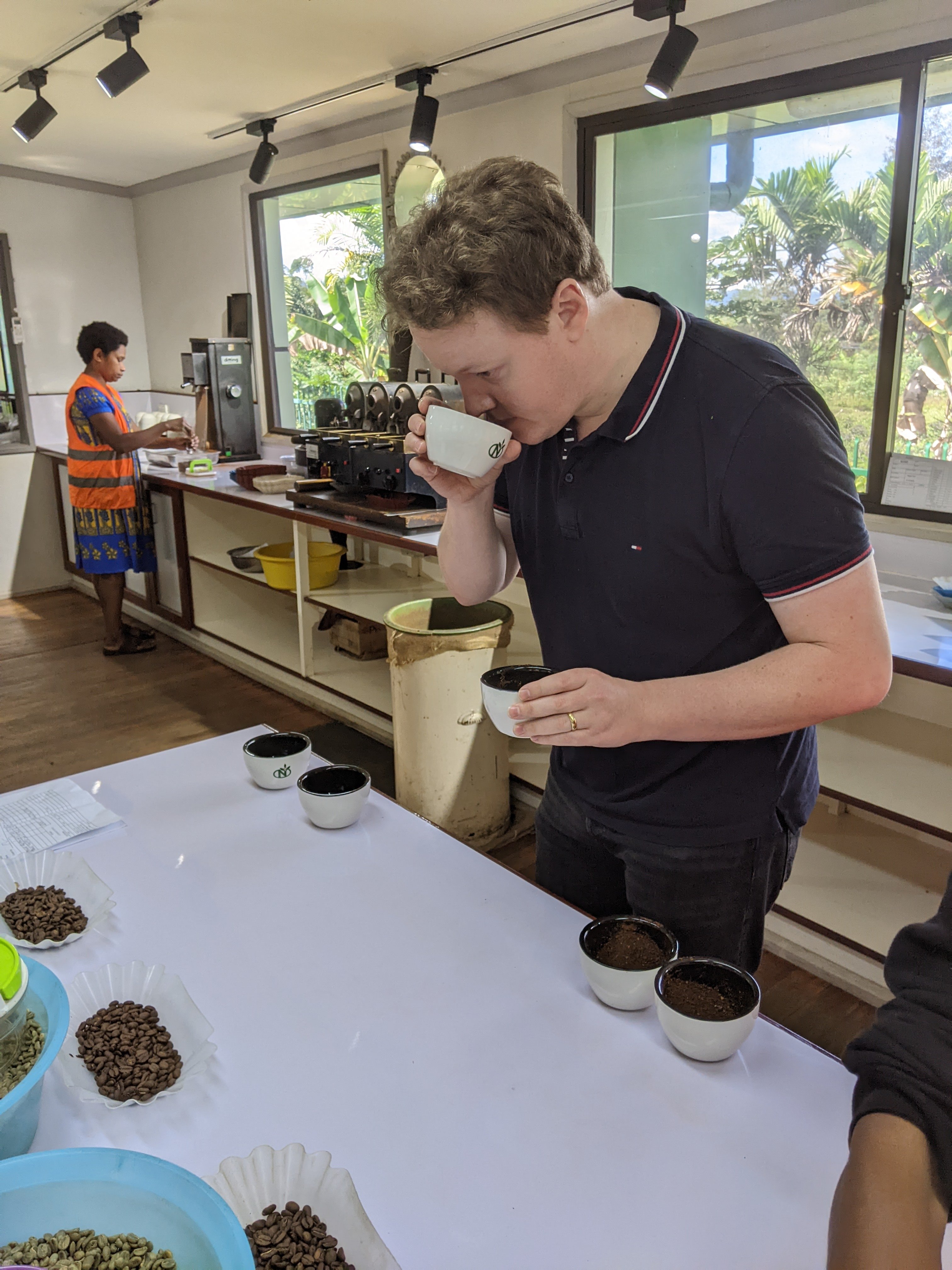
Having spent a week in the highlands, seeing the effort and care taken with coffee, I have great respect and admiration for PNG coffee and the people who produce it. We are proud to use coffee from Papua New Guinea at Pablo and Rusty’s.
Interested in more adventures from our Coffee Roasting team? Check out Samson's blog where he got to observe the Mexico 2023 Cup Of Excellence. Read it here.



